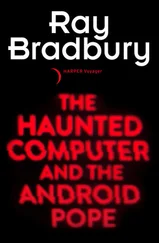The idea of a Scripture of the Microcult is not entirely a joke. The origins of the microcomputer industry are indeed spoken of in quasi-mythological tones by many people in the personal computer culture, even though the events upon which the myths are based occurred no more than a decade ago. Gates and the Woz are real people who happen to have created multimillion-dollar companies before they were thirty. MITS was a real place that symbolizes to computer freaks what Kitty Hawk means to aviation fanatics. And there is a definite evangelical streak to be found beneath the entrepreneurial surface of the founders of the earliest microcomputer businesses.
Many of my colleagues started out as hobbyists and ended up as industrialists, and although their fortunes have diverged in a dozen unlikely directions over the past ten years, many share a reverent nostalgia for the 1975-76 era—the Age of the Altair. Indeed, for many, that era represents a kind of magical time, but in reality it was directly experienced by only a rare few survivors who still tell the tales of Altair to the multitudes of recent converts.
Altair was the name of the first widely used hobbyist computer based on the new microprocessor technology. It was a do-it-yourself kit that preceded the factory-assembled Apples and Commodores and IBM PCs. Compared with today’s personal computers, the Altair was computationally puny and unbelievably difficult to program. But it inspired a group of people who believed it was possible to have computers for their own personal use. They were solitary, garage-based computer tinkerers who called their avocation “homebrewing” and who were all surprised when they discovered how many others were fiddling with Altairs, or patiently waiting for Altair parts to be shipped to them.
But these Altair users were more than the forerunners of the personal computer enthusiasts who were to buy Apples and PCs five or six years later. They were the spearhead of the microcomputer revolution, and although some of them even knew it, none of that first wave could have predicted how much money, power, and attention would come their way over the course of a decade.
Out of that hobbyist network of a few thousand people, a dozen or so ended up creating the personal computer technology we see today in millions of homes and offices. Some of those people are still tinkering—happily or not. A few of them are personally worth tens or hundreds of millions of dollars. Not all of them are on speaking terms with one another any longer, but in the beginning, all were unified by their one common interest: the microcomputer. In fact, the microcomputer industry is the only major one in the world that started out as a club for teenage enthusiasts.
Both the hardware and software branches of the industry were directly influenced by these enthusiasts who, as relatively small groups of hobbyists, gathered in the mid-1970s to share ideas. Of those groups, two are most notable. The first included the now-legendary amateur computer builders in the San Francisco Bay Area who called themselves the Homebrew Computer Club and who ended up being the founding fathers of the microcomputer hardware industry. The second group consisted of a pair of very young but decidedly professional programmer-entrepreneurs from Seattle. It was their creation that was the beginning of what has become today’s microcomputer software industry.
Until recently, the better known story behind the microcomputer revolution has been on the hardware side of things, and yet, as a mathematically minded programmer would say, hardware is necessary for making a computer, but it isn’t sufficient. You need more than circuitry to make a computer do anything useful. You need software —coded instructions that turn a computer into a word processor or spreadsheet, telecommunication terminal or video game. The lesser-known chapters of this story, then, are about software, and they’re chapters where people like me step into the scenario.
Still, it wasn’t until the waning days of the homebrew era that software people started to become important. When the Age of Altair gave way to the eras of Atari and Apple, the software epoch had only just begun. Its dawning marks the point in history where the physical components of computers became less important than the human ability to think of new things to do with these machines. Nevertheless, no book about microcomputer software people can exclude the Altair story or a discussion of microcomputer hardware, nor can it leave out an early tribute to Ed Roberts, Paul Allen and Bill Gates, Steve Wozniak, and the other legendary homebrewers whose hobby unexpectedly gave birth to a new and unprecedented kind of industry.
Although I know several of these founding fathers, my own roots in the industry do not go as far back as the Altair Era. I was a young attorney working in Chicago when the era began and the first microcomputer kits were marketed by a company located between a laundromat and a massage parlor in a shopping center in Albuquerque. I didn’t write my first line of microcomputer code until three years after the now-famous January 1975 issue of Popular Electronics told of a wondrous new toy for electronic enthusiasts. That new toy was an affordable computer, and the company that sold it by mail order was called Micro Instrumentation and Telemetry Systems—fondly remembered as “MITS.”
A brief discussion about the technology and history of the microprocessor and microcomputer is necessary in order to explain what was so important about the mail-order microcomputers sold in the 1970s by a small company that no longer exists. Computers are not as hard to understand as they have been made out to be. You might need to know esoteric details of electronic circuit design if you intend to build a computer, and a healthy knowledge of how the computer operates is helpful if you want to successfully program one. But you need to know only a few simple, general principles to understand how computers work.
The first principle has more to do with economics than electronics, and it is also the hardest to believe: Computers get smaller, more powerful, and less expensive as time passes. Computers and software change very quickly because the electronic technology on which computers are based also changes quickly. Most of these changes are triggered by the continuing miniaturization of computer components. In fact, the computer revolution has been strongly influenced by the electronic miniaturization revolution, the importance of which lies in the relationship between the size of electronic components and the efficiency of computers built from those components.
To understand the power of software, you need to know only two essential facts about computing machinery. First, a computer is a machine for interpreting instructions, especially instructions that tell it how to imitate other machines. Second, both the machine that interprets the instructions and the instructions themselves are built from very simple elements—electrical switches that can be turned on and off. In essence, a computer is a collection of switches, which can be vacuum tubes, transistors, integrated circuits, or any other technology that can create a network of devices that are either on or off.
The real power of a computer lies in how and in what patterns you turn those switches on and off—the software. When you want to create switching patterns that can accomplish complex tasks like calculating the results of physics equations or storing census statistics or creating pictures on a screen, you need lots of switches—very fast ones.
The faster those switches can operate, and the more switches you can put into a computer, the more things you can do with the computer. And smaller switches can operate at higher speeds than large ones. At the heart of the microprocessor revolution is the fact that the switches got smaller and faster. As the speed of the computer’s fundamental elements increased, so did the sheer informational volume—the “memory,” or the amount of coded on-and-off information that the computer could store. Over the four decades since the first electronic digital computer was invented, computing power increased more than a millionfold.
Читать дальше










